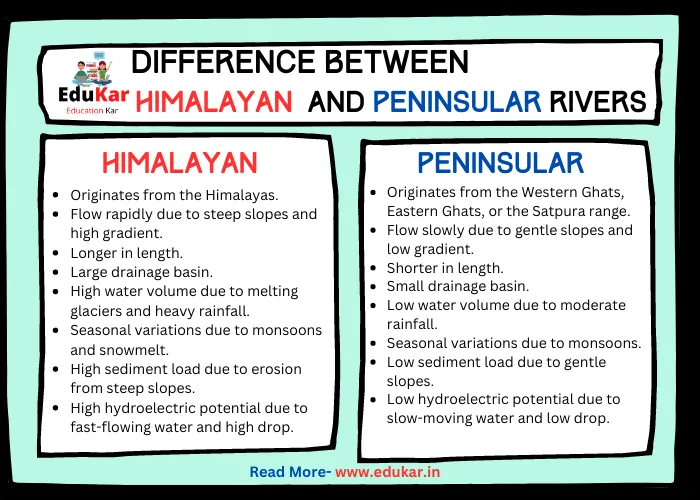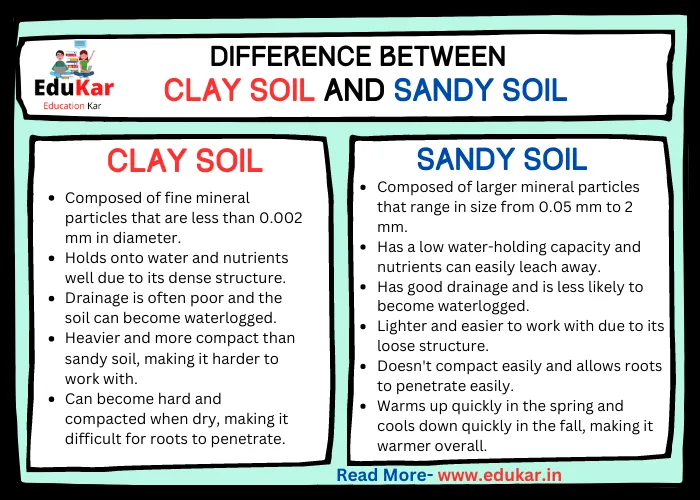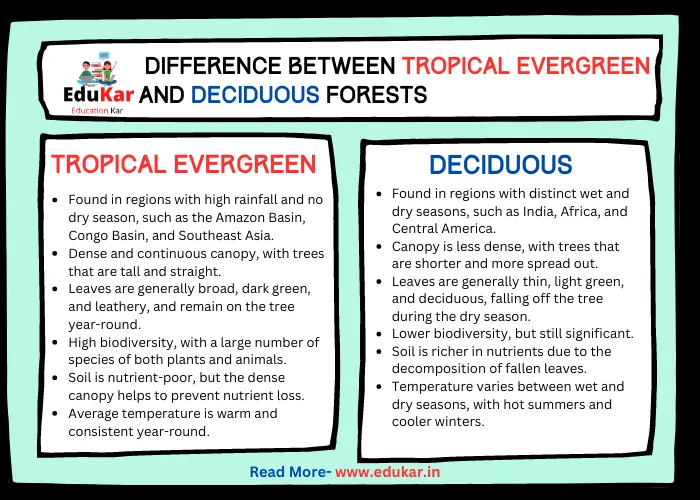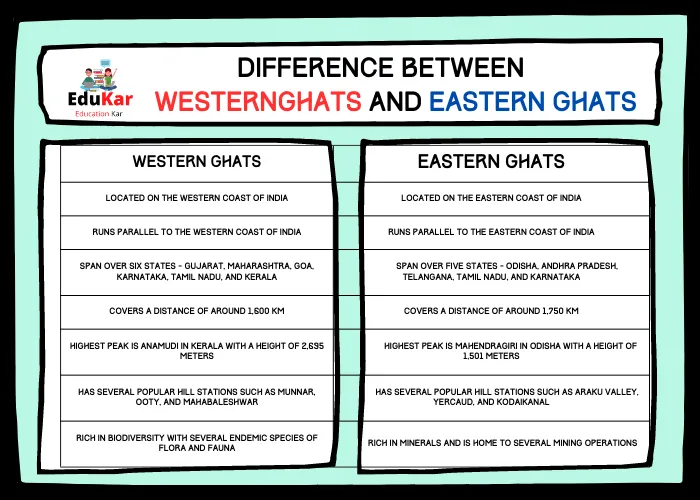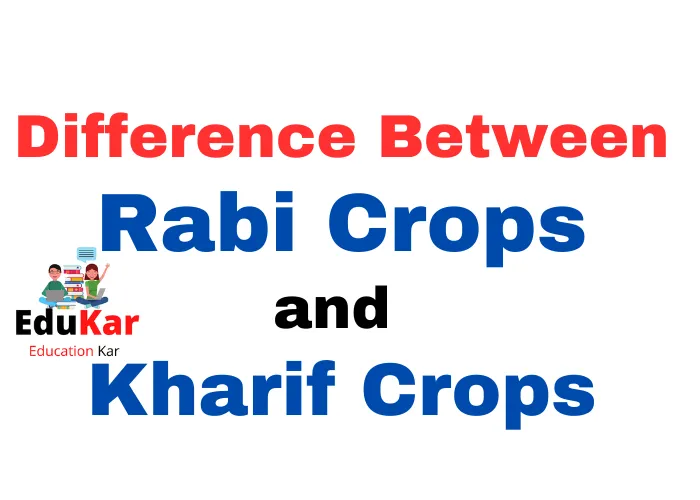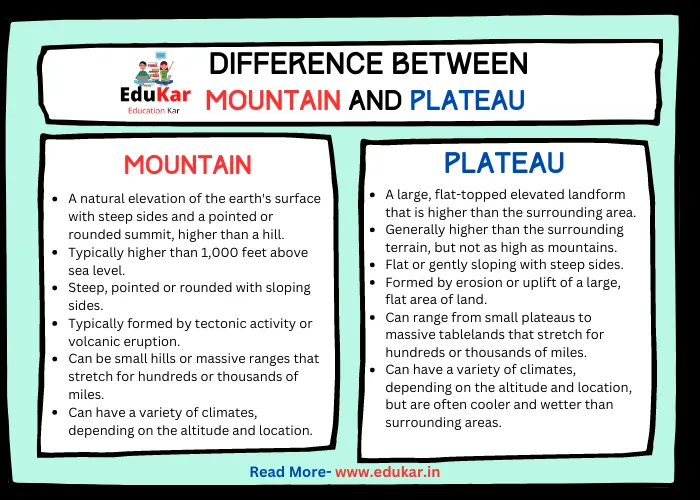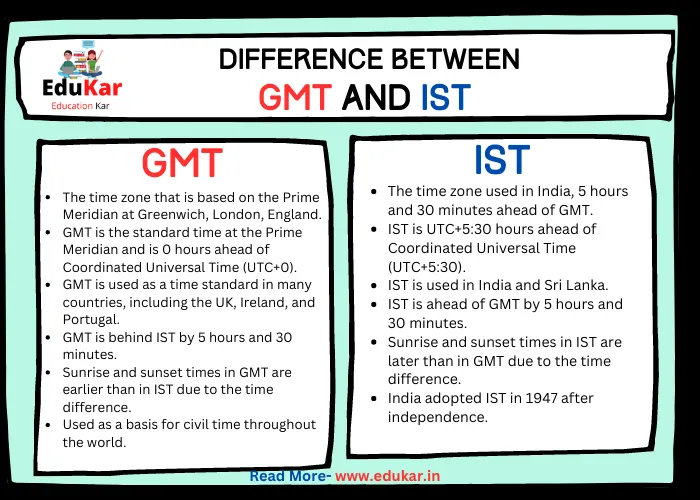Contents
- 1 Introduction
- 2 Bhangar
- 3 khadar
- 4 Conclusion
- 5 FAQs:
- 5.1 What is the Indo-Gangetic Plain?
- 5.2 What is Bhangar?
- 5.3 What is Khadar?
- 5.4 What are the soil characteristics of bhangar?
- 5.5 What are the soil characteristics of khadar?
- 5.6 What is the difference between bhangar and khadar in terms of vegetation?
- 5.7 Why is it important to understand the difference between bhangar and khadar?
- 5.8 Where are bhangar and khadar typically found in the Indo-Gangetic Plain?
This article explores the difference between two types of land in the Indo-Gangetic Plain: bhangar and khadar. It discusses the formation, soil characteristics, vegetation, and agricultural, ecological, and geological implications of each type of land. Understanding the difference between bhangar and khadar is crucial for farmers, ecologists, and geologists in making the right decisions about land use and development.
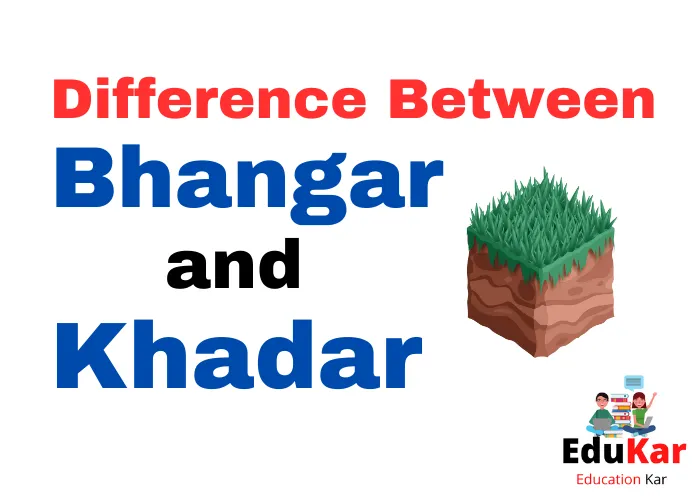
Introduction
India is home to a variety of landscapes, and one of the most interesting is the Indo-Gangetic Plain. This fertile region is formed by the Ganges, Brahmaputra, and Indus rivers, and is known for its agricultural productivity. But within this region, there are two distinct types of land: bhangar and khadar. Understanding the difference between these two types of land is important for a variety of reasons, including agriculture, ecology, and geology.
Bhangar
Bhangar is a type of land that is characterized by its high elevation and low fertility. It is formed by the deposition of alluvial soil over thousands of years. This type of land is typically found in the western part of the Indo-Gangetic Plain, in the states of Uttar Pradesh, Haryana, and Punjab.
The formation of bhangar began during the Quaternary period, when the Indian subcontinent was uplifted by tectonic activity. As the land rose, rivers began to deposit sediment on the plains. Over time, these deposits built up and formed the bhangar.
Bhangar soil is characterized by its high clay content, which makes it difficult to cultivate. It is also low in nutrients, which means that crops grown on bhangar land require a lot of fertilizer. Vegetation on bhangar land is typically limited to hardy plants like grasses and shrubs.
khadar
khadar is a type of land that is characterized by its low elevation and high fertility. It is formed by the deposition of alluvial soil during floods. Khadar is typically found in the eastern part of the Indo-Gangetic Plain, in the states of Bihar and West Bengal.
The formation of khadar is ongoing, as floods continue to deposit sediment on the plains. As a result, khadar is more dynamic than bhangar, and is constantly changing. Khadar soil is characterized by its high nutrient content, which makes it ideal for agriculture. Vegetation on khadar land is typically lush, and includes a variety of crops like rice, wheat, and sugarcane.
| S.No. | Bhangar | Khadar |
|---|---|---|
| 1 | Bhangar refers to old alluvial soil | Khadar refers to new alluvial soil |
| 2 | Bhangar soil is less fertile | Khadar soil is more fertile |
| 3 | Bhangar soil is generally found at higher elevations | Khadar soil is generally found at lower elevations |
| 4 | Bhangar soil is coarser and more porous | Khadar soil is finer and more compact |
| 5 | Bhangar soil has a lower water-holding capacity | Khadar soil has a higher water-holding capacity |
| 6 | Bhangar soil is more prone to erosion | Khadar soil is less prone to erosion |
| 7 | Bhangar soil is more suited for crops that can withstand drought conditions | Khadar soil is more suited for crops that require a lot of water |
| 8 | Bhangar soil is more acidic | Khadar soil is more alkaline |
| 9 | Bhangar soil is found in the northern parts of India | Khadar soil is found in the southern parts of India |
| 10 | Bhangar soil is commonly used for growing crops such as wheat, mustard, and maize | Khadar soil is commonly used for growing crops such as rice, sugarcane, and jute |
The differences between bhangar and khadar are significant, and understanding these differences is important for a variety of reasons. One of the most important is agriculture. Farmers need to know which type of land they are working with in order to choose the right crops and cultivation techniques. For example, because bhangar soil is low in nutrients, farmers may need to apply more fertilizer to crops grown on this type of land. Similarly, because khadar is prone to flooding, farmers may need to use techniques like crop rotation and intercropping to maintain soil fertility.
Ecologically, the differences between bhangar and khadar are also important. Bhangar is typically less biodiverse than khadar, which means that it is less able to support a variety of species. In contrast, khadar is home to a variety of plant and animal species, many of which are unique to this type of land. For example, the Gangetic dolphin is found only in the rivers of the Indo-Gangetic Plain, and is dependent on khadar for its survival.
Geologically, the differences between bhangar and khadar are also significant. Bhangar is a relatively stable type of land, and is less prone to erosion than khadar. Khadar, on the other hand, is constantly changing as a result of flood deposits. This makes it more difficult to build infrastructure like roads and buildings on khadar land.
Conclusion
Bhangar and Khadar are two distinct types of land in the Indo-Gangetic Plain. While both are formed by alluvial deposits, they differ significantly in their location, formation, soil characteristics, vegetation, and ecological and geological implications. Farmers, ecologists, and geologists all need to understand the differences between bhangar and khadar in order to make informed decisions about land use and development.
The agricultural implications of these differences are particularly significant, as farmers need to know which type of land they are working with in order to choose the right crops and cultivation techniques. Similarly, ecologists need to be aware of the differences in vegetation and biodiversity between bhangar and khadar in order to protect and conserve these unique ecosystems. Geologists also need to consider the differences in stability and erosion between the two types of land when planning infrastructure development.
FAQs:
What is the Indo-Gangetic Plain?
The Indo-Gangetic Plain is a fertile region in India formed by the Ganges, Brahmaputra, and Indus rivers. It is known for its agricultural productivity.
What is Bhangar?
Bhangar is a type of land in the Indo-Gangetic Plain that is characterized by its high elevation and low fertility. It is formed by the deposition of alluvial soil over thousands of years.
What is Khadar?
Khadar is a type of land in the Indo-Gangetic Plain that is characterized by its low elevation and high fertility. It is formed by the deposition of alluvial soil during floods.
What are the soil characteristics of bhangar?
Bhangar soil is characterized by its high clay content, which makes it difficult to cultivate. It is also low in nutrients, which means that crops grown on bhangar land require a lot of fertilizer.
What are the soil characteristics of khadar?
Khadar soil is characterized by its high nutrient content, which makes it ideal for agriculture.
What is the difference between bhangar and khadar in terms of vegetation?
Vegetation on bhangar land is typically limited to hardy plants like grasses and shrubs, while vegetation on khadar land is typically lush and includes a variety of crops like rice, wheat, and sugarcane.
Why is it important to understand the difference between bhangar and khadar?
Understanding the difference between bhangar and khadar is important for a variety of reasons, including agriculture, ecology, and geology. Farmers need to know which type of land they are working with in order to choose the right crops and cultivation techniques, while ecologists and geologists need to be aware of the differences in vegetation, biodiversity, stability, and erosion when planning land use and development.
Where are bhangar and khadar typically found in the Indo-Gangetic Plain?
Bhangar is typically found in the western part of the Indo-Gangetic Plain, in the states of Uttar Pradesh, Haryana, and Punjab. Khadar is typically found in the eastern part of the Indo-Gangetic Plain, in the states of Bihar and West Bengal.

